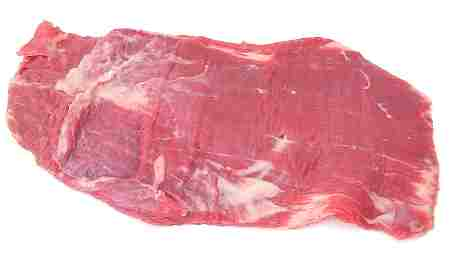"The gin and tonic has saved more Englishmen's lives, and minds, than all the doctors in the empire."
Winston Churchill
The above statement is completely true. I already know what you are thinking: “C’mon guys. How has gin have saved more people’s lives than doctors? Do you know how hard doctors study? What their GPA looked like? (they certainly didn’t waste their time on webpages) Doctors represent science, which you can’t compare gin to in terms of benefiting humanity.”
Oh your weak, fragile little minds. You are trying to force a conflict here, between science on one hand, and gin on the other – but what you are missing is they are in fact the same thing. One can’t force the search for empirically verifiable theories from the search to find a better way to get fucked up for less than $5 per 750ml.
Or to put it a better way, the people responsible for your juniper-flavored hangovers are the same people extracting chemicals from plants and disproving the medieval superstitions about the body. Need examples? Well, you asked for it….
OF COURSE IT WAS DISCOVERED IN A UNIVERSITY LAB SETTING
 |
Like most of science, we start off in the early 17th century. Specifically with a great man named Dr. Franciscus Sylvius. He was a Dutchman, whose actual name was Franz de le Boë before it was Latinized, who taught at Leyden University in the Netherlands. Like many a professor he held a vague grudge against something – the something in this case being the humoral theory, or the medieval school of thought that the body’s health is based on the balance of four elements – blood, phlegm, choler and melancholy. This theory of sickness relied heavily on interpretation and speculation, and very little on what we would consider independently verifiable science. |
Dr. Sylvius would have none of it. He is considered the founder of the Iatrochemical School of Medicine, which held that disorders in the body were caused by empirically verifiable chemical reactions. This blew a whole right threw the humoral theory, as it was easier to incorporate newly discovered concepts like “circulation” and “acidity/alkalies.” He helped to discover that blood circulates independently throughout the body. He discovered a fissure in the brain that to this day is still known as the “Fissure of Sylvius.” He also took it to the streets, creating the modern clinical. In 1664 he writes:
"I have led my pupils by the hand to medical practice, using a method unknown at Leyden, or perhaps elsewhere, i.e., taking them daily to visit the sick at the public hospital. There I have put the symptoms of disease before their eyes; have let them hear the complaints of the patients, and have asked them their opinions as to the causes and rational treatment of each case, and the reasons for those opinions. Then I have given my own judgment on every point. Together with me they have seen the happy results of treatment when God has granted to our cares a restoration of health; or they have assisted in examining the body when the patient has paid the inevitable tribute to death."
He also created the first chemistry laboratory (all you kids horribly burnt in a high school chem lab accident can blame him). He did many experiments in his Leyden lab – one of them involved diuretics. He once said : “One-third of all diseases can be cured by sweating.” Lord knows what he thought about the other way to remove liquids, but we do know he spent quite a lot of time trying to find the perfect diuretic. Not just any diuretic though; he needed one cheap, so it was affordable to the masses of people suffering from kidney disorders and stomach problems. He found his solution in 1650.
Enter gin. This begins the long history of associating gin with the cheapest possible solution to a problem (not to mention having to use the bathroom an excessive amount). Fruit derived alcohol was very expensive back in those days – and nothing was cheaper than grain alcohol. Dr. Sylvius took the grain alcohol, and started searching for something else that was disturbingly cheap and also a heavy diuretic; he found the perfect match of both in “juniper-berry oil.”
The Dutch called it jenever (juniper), the French called it genievre – the later being the name Dr. Sylvius gave to his new concoction. You and I know it simply, as gin.
ALKALOIDS, COLONIALISM
Let’s fast forward. Due to a series of events, including a bloodless revolution, yields of low-quality grain not suitable for market, and the Gin Riot’s ability to overturn Gin-related legislation (stay tuned for more details later in the week!) Gin became the drink of choice for the British people as they began to build their giant empire.
The empire did come across one major stumbling block: malaria. The disease was a major problem in their colony in India. Malaria has been of the major killers throughout the 15th and 16th centuries, with no known cure in Europe. In the early 17th century, an Augustinian monk named Antonio de Calancha found a tree “whose bark, of the color of cinnamon, made into powder amounting to the weight of two small silver coins and given as a beverage, cures the fevers and tertiana [of malaria].” The name of the bark was Cinchona.
It took quite some time for cinchona bark to catch on as a malaria cure, as it was closely associated with Catholicism in an increasingly Protestant world. Also the idea of drinking an awful tasting hot liquid was a world apart from the normal medicine of the time period – where was the bleeding? What humors were involved? Eventually though, Cinchona was accepted as the standard cure.
Starting in 1817 the French chemists Pierre-Joseph Pelletier and Joseph Caventou began a series of groundbreaking experiments using mild solvents to isolate out active plant elements, acts which created the idea of chemistry surrounded around alkaloids. This would allow chemists to start playing around with plants using specific chemical elements that the plants contained, rather than having to makeshift units of plant extracts and bark mixtures. Within the first year they isolated the green pigment from plant, which they named Chlorophyll. In 1820 they isolated the active malaria fighting element in Cinchona – and named it quinine.
Hop over a continent to the British imperial presence in India circa 1870. Malaria is a massive problem for the people of India. As it us spread by mosquitoes, it was very difficult to isolate to one caste of people, and as such hit the British soldiers stationed there. Quinine extract is the obvious medicine, however in its pure form its effectiveness is matched only by its repulsiveness. Dissolved in water, it made a beverage called “Indian Tonic Water.” Tonic Water available in stores these days is sweetened and contains a fraction of the quinine from those days. So picture less sweet, and significantly more bitter, Tonic Water. Awful, right? Worse, according to Merck Index it takes 2L of water to dissolve 1 gram of quinine. You’d have to drink gallons of it!
| Enter gin. The British, being the righteous bastards that they are, learned quickly that gin would take care of this dissolving issue. A gram of quinine dissolves in 0.8ml, or about 2,500x less liquid than water. Add a twist of lime, and you now have the Gin and Tonic – the perfect way to get buzzed, force indigenous people into the salt mines, and keep healthy by fighting malaria. Hence the quote from Mr. Churchill here that opened this article – the Gin and Tonic saved the British Army from malaria. Let’s see your chocolate vodka martini nonsense do that! |
 |
So there you have it. Next time you are kicking back, enjoying a fine martini, tom collins, gin and tonic, or just plain old gin by itself, take comfort in knowing that what you drink stands for the virtues of empiricism, disinterested inquiry, theories based on observation and not on faith, weights and measures, and Science.





